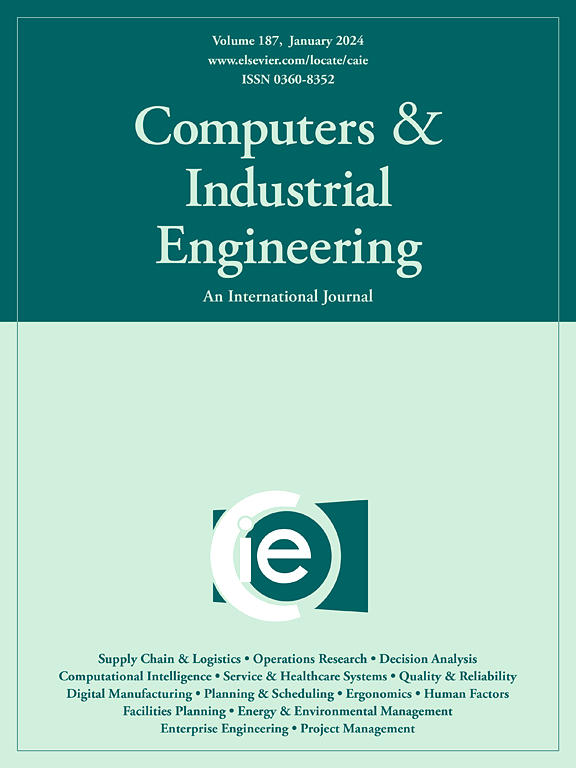A robust ranking approach for target setting of system requirements based on preference decomposition
IF 6.7
1区 工程技术
Q1 COMPUTER SCIENCE, INTERDISCIPLINARY APPLICATIONS
引用次数: 0
Abstract
An essential aspect of system development is the target setting for system requirements (SRs). In the context of quality function deployment, constructing customer preference (CP) functions typically requires eliciting comprehensive information, including relative weights of customer requirements (CRs), influence relationships between CRs and SRs, correlations between SRs and marginal utility functions of different SRs. This process imposes a significant cognitive burden on both designers and customers. In addition, issues related to robustness and computational efficiency in the target setting process remain inadequately addressed. To tackle these challenges, a robust ranking approach based on preference decomposition is proposed for SR target setting. First, the CP function is modeled through the UTilité Additives with interactions method, which captures correlations between SRs to measure customer satisfaction. Second, indirect preference information is elicited through pairwise comparisons of reference alternatives and expressed in hesitant fuzzy linguistic terms, thereby reducing cognitive burden. Third, a series of linear programming models are developed to perform preference decomposition and determine parameter intervals of the CP function. Fourth, the decomposition algorithm of stochastic multicriteria acceptability analysis is integrated to robustly rank feasible SR combinations with computational efficiency, ultimately yielding optimal SR targets. The feasibility and effectiveness of the proposed approach are demonstrated through its application to target setting in unmanned aerial vehicle development.
基于偏好分解的系统需求目标设置的鲁棒排序方法
系统开发的一个重要方面是系统需求(SRs)的目标设置。在质量功能部署的背景下,构建客户偏好(CP)函数通常需要获取全面的信息,包括客户需求的相对权重、客户需求与客户偏好之间的影响关系、客户偏好与不同客户偏好的边际效用函数之间的相关性。这个过程给设计师和客户都带来了巨大的认知负担。此外,与目标设定过程中的稳健性和计算效率有关的问题仍然没有得到充分解决。为了解决这些问题,提出了一种基于偏好分解的鲁棒排序方法。首先,通过效用添加物与交互方法对CP函数进行建模,该方法捕获sr之间的相关性以测量客户满意度。第二,通过两两比较获得间接偏好信息,并以犹豫模糊语言表达,从而减轻认知负担。第三,建立了一系列线性规划模型来进行偏好分解并确定CP函数的参数区间。第四,结合随机多准则可接受性分析分解算法,结合计算效率对可行SR组合进行鲁棒排序,最终得到最优SR目标。通过将该方法应用于无人机研制中的目标设定,验证了该方法的可行性和有效性。
本文章由计算机程序翻译,如有差异,请以英文原文为准。
求助全文
约1分钟内获得全文
求助全文
来源期刊

Computers & Industrial Engineering
工程技术-工程:工业
CiteScore
12.70
自引率
12.70%
发文量
794
审稿时长
10.6 months
期刊介绍:
Computers & Industrial Engineering (CAIE) is dedicated to researchers, educators, and practitioners in industrial engineering and related fields. Pioneering the integration of computers in research, education, and practice, industrial engineering has evolved to make computers and electronic communication integral to its domain. CAIE publishes original contributions focusing on the development of novel computerized methodologies to address industrial engineering problems. It also highlights the applications of these methodologies to issues within the broader industrial engineering and associated communities. The journal actively encourages submissions that push the boundaries of fundamental theories and concepts in industrial engineering techniques.
 求助内容:
求助内容: 应助结果提醒方式:
应助结果提醒方式:


